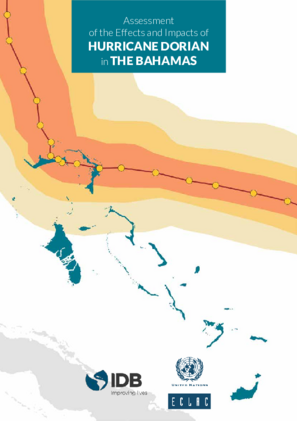Assessment of the Effects and Impacts of Hurricane Dorian in the Bahamas
Date
Aug 2020
Hurricane Dorian is not an isolated occurrence, but the latest example of recurrent extreme climate events that have changed the Bahamian landscape and impacted its economy. The increase in water temperatures is likely to contribute to a tendency for tropical storms to be, on average, stronger than they have been in the past (Bruyere, Holland, 2014; Balaguru, Foltz 2018; Bathia, Vechia et al, 2019; Trenberg, Cheng et all, 2018). Due to its location in the Atlantic hurricane belt and like other Small Island Developing States (SIDS), The Bahamas is extremely vulnerable to the effects of disasters and climate change, as some 80 percent of the landmass is within 5 ft (1.5 m) of mean sea level and coastal areas hold the majority of the population and economic activity. Another relevant vulnerability is access to drinking water, which is made worse by contamination of water resources caused by storm surges. In the upcoming years, the country will face difficult questions of whether to relocate coastal populations and how to smartly invest in more resilient infrastructure. It is, therefore, imperative for The Bahamas, as a country, to establish a comprehensive approach to meeting these challenges and to incorporate considerations for disaster risk management into all features of national development.




